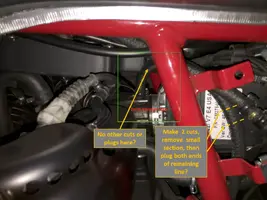... slip ons, SAS removal, EVAP removal, a good ECU map to suit...
Pretty much the same as what I've done, and all the V7III Racer needs engine-wise far as I'm concerned.
The next stage of performance improvements after that is to overhaul the front suspension and fit a better set of tires to get the bike working and handling the way it ought to. I went the extra mile with the fancy Kineo wheels, because I'm like that, but sorting the suspension and putting something better than the Pirellis on there is the important part.
Pretty much the same as what I've done, and all the V7III Racer needs engine-wise far as I'm concerned.
The next stage of performance improvements after that is to overhaul the front suspension and fit a better set of tires to get the bike working and handling the way it ought to. I went the extra mile with the fancy Kineo wheels, because I'm like that, but sorting the suspension and putting something better than the Pirellis on there is the important part.





